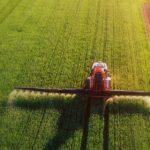Paraquat, sometimes referred to as paraquat dichloride or by the brand name Gramoxone, is one of the market’s most widely used industrial herbicides. It is also one of the most dangerous. According to the Environmental Protection Agency (EPA), ingesting just one tablespoon of paraquat can be deadly. There is no antidote or cure for paraquat poisoning.
Inhaling paraquat or exposure to it through the skin can be dangerous. Studies show that people exposed to paraquat in these ways are up to 2.5 times more likely to develop Parkinson’s disease than those who were not exposed to the industrial weedkiller. Paraquat is so dangerous that 32 countries have phased out its use or banned it altogether. However, it is still used in the U.S.
When Does Paraquat Exposure Occur?
Decades ago, the EPA established that the primary route of exposure to paraquat occurs during the weedkiller’s preparation, application, and post-application. To reduce the risk of exposure among workers, the agency created certain guidelines beginning in 1997, such as:
- Limiting the use of paraquat to certified pesticide applicators only;
- Requiring people who work with paraquat to use chemical-resistant gloves made of laminate, butyl rubber, nitrile rubber, neoprene rubber, natural rubber, polyethylene, polyvinyl chloride (PVC), or Viton;
- Requiring applicators to use respiratory protection and safety glasses that include splash guards;
- Requiring mixers and loaders to add a full-face shield and a chemical-resistant apron;
- Improving warning labels to draw attention to the toxic nature of paraquat and its dangers;
- Requiring closed-system packaging so that paraquat can be moved directly into proper application equipment and reduce the chance of paraquat exposure.
How Dangerous is Paraquat Exposure?
In 2019, the EPA tested the risk of exposure to bystanders at the edge of fields treated with paraquat. The results showed bystanders were also at risk for paraquat exposure from spray drift. In July 2021, the agency finalized new and stronger protections to reduce exposure to paraquat for workers and bystanders. Those measures include:
- Requiring a residential drift buffer for all aerial applicators;
- Prohibiting use of human flaggers;
- Prohibiting pressurized handgun and backpack sprayer application methods;
- Requiring closed cabs if the area treated in a 24-hour period is more than 80 acres;
- Requiring closed cabs or PF10 respirators if the area treated in a 24-hour period is 80 acres or less;
- Requiring a 7-day restricted entry interval (REI) for cotton desiccation;
- Requiring a 48-hour REI for all crops and uses except cotton desiccation; and
- Requiring mandatory spray drift management label language.
Studies have established the link between paraquat and Parkinson’s disease. The American Parkinson Disease Association reports that those most likely to develop the worsening disorder are those who farm as an occupation, are exposed to farm animals, live on a farm, are exposed to pesticides, drink well water, and live in rural areas.
Paraquat Lawyers and Lawsuits
Paraquat, known by the brand name Gramoxone, is one of the widely used herbicides on the market and one of the most dangerous. Exposure to this toxic chemical has been linked to Parkinson’s disease, a degenerative disorder or one that grows worse over time in the central nervous system. Those at the highest risk of paraquat exposure include farmers, agriculture workers, crop dusters, and anyone involved in the mixing, applying, or loading of the paraquat herbicide. If you were exposed to paraquat and developed Parkinson’s, you may qualify for a paraquat lawsuit and need the help of a paraquat lawyer.
Our firm has the resources to represent clients throughout the country while never losing sight of the individual. If you or a loved one was exposed to paraquat and have been diagnosed with Parkinson’s disease, we can help.
For Lawyers
Let us put our resources to work for you. If you are an attorney, we can competently and conscientiously assist you in handling any group of cases, no matter how large.




